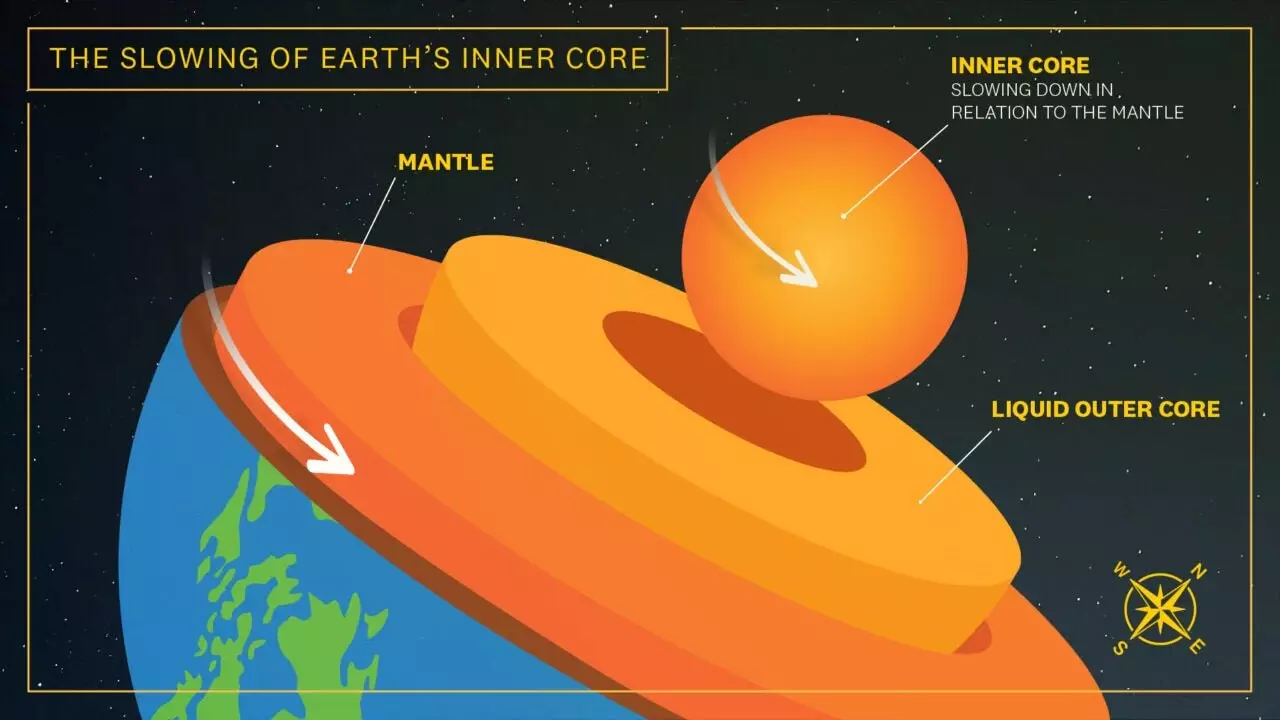Recent research conducted by scientists at the University of Southern California has challenged the long-standing belief that the Earth’s inner core rotates faster than the planet’s surface. In a study published in Nature, the USC team presented compelling evidence indicating a surprising shift in the inner core’s movement. Contrary to previous assumptions, the inner core is actually slowing down, deviating from its historical behavior.
Led by John Vidale, a Dean’s Professor of Earth Sciences at USC, the research team analyzed seismic data to track the inner core’s movement. By studying seismic waves from repeating earthquakes, the scientists were able to detect a significant decrease in the inner core’s speed starting around 2010. This unexpected finding challenges existing models of the Earth’s core dynamics and raises important questions about the underlying mechanisms driving this shift.
Vidale and his colleague Wei Wang of the Chinese Academy of Sciences employed a novel methodology in their study, focusing on repeating earthquakes as a means of unraveling the inner core’s behavior. By examining seismic data from multiple sources, including nuclear tests and natural seismic events, the researchers pieced together a comprehensive picture of the inner core’s movement. This innovative approach offered new insights into the complex interplay between the inner core, outer core, and mantle.
The discovery of the inner core’s slowdown has significant implications for our understanding of Earth’s geophysical processes. The researchers speculate that the backtracking of the inner core could have subtle effects on the planet’s rotation, potentially influencing the length of a day by fractions of a second. While these changes may seem minor in the grand scheme of things, they underscore the intricate relationship between the Earth’s core dynamics and its surface behavior.
Looking ahead, the USC scientists are eager to delve deeper into the inner core’s movement and unravel the factors driving its unexpected slowdown. By refining their methods and expanding their dataset, the researchers hope to gain a more detailed understanding of the inner core’s trajectory. As Vidale aptly put it, “The dance of the inner core might be even more lively than we know so far.” This sentiment encapsulates the excitement and intrigue surrounding this groundbreaking discovery.
The USC scientists’ findings shed new light on the Earth’s inner core, challenging conventional wisdom and opening up new avenues for research. By pushing the boundaries of our knowledge, they have highlighted the dynamic and ever-evolving nature of our planet’s inner workings. The discovery of the inner core’s slowdown serves as a testament to the power of scientific inquiry and the endless possibilities for discovery that lie beneath our feet.


Leave a Reply